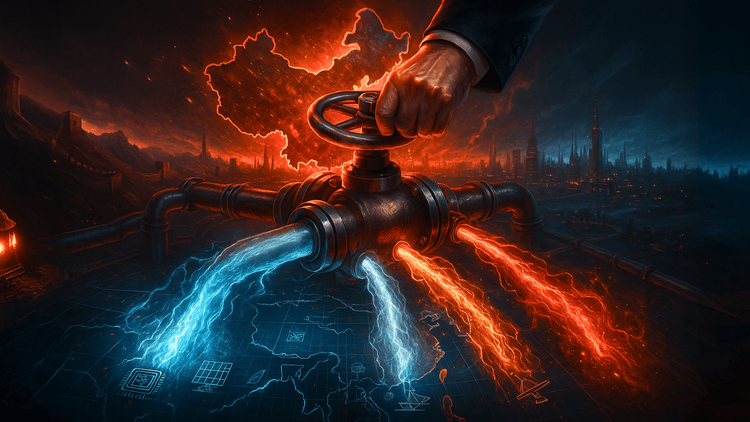Asteroid Miner AstroForge Sets Sights on Third Space Mission for 2025
AstroForge’s Third Mission Aims to Revolutionize Space Mining by Docking with a Metallic Asteroid in 2025

AstroForge, a pioneering force in the asteroid mining sector, is gearing up for its most ambitious mission yet—its third mission set for 2025. This mission, named Vestry, marks a significant milestone not only for AstroForge but also for the future of space exploration and resource acquisition. With a bold plan to mine precious metals from asteroids, AstroForge is positioned to revolutionize the way we think about resource scarcity on Earth.
AstroForge’s Mission Overview
AstroForge, a California-based startup, was founded with the vision of tapping into the untold riches of space. By harvesting precious metals from asteroids, the company aims to provide a sustainable solution to Earth’s dwindling supply of critical resources. Their mission is nothing short of audacious—establishing a new supply chain of raw materials from space, which could potentially reshape global industries.
The Journey So Far
AstroForge’s journey has been one of both innovation and perseverance. The company’s first mission, Brokkr-1, launched in April 2023, was a stepping stone in their ambitious plan. Although the mission faced challenges—most notably, the inability to transmit commands for space-based minerals and metals refining technology—it provided invaluable insights for future endeavors.
Brokkr-1 Mission
Brokkr-1 was AstroForge’s inaugural mission, designed to test the waters of space mining. The mission aimed to demonstrate the company’s refining technology, a critical component for processing asteroid materials in deep space. Despite its setbacks, Brokkr-1 laid the groundwork for future missions, highlighting the complexities of space-based operations.
Odin Mission
The company’s second mission, originally named Brokkr-2 and later renamed Odin, is scheduled for launch in the fourth quarter of 2024. Odin’s objective is to fly by a body in the Solar System beyond the Moon, capturing vital images and data. If successful, Odin will mark a historic achievement as the first private mission to venture beyond the Earth-moon system.
 The Odin spacecraft. (Image courtesy of Hannah Burkey | AstroForge. via Mining.com)
The Odin spacecraft. (Image courtesy of Hannah Burkey | AstroForge. via Mining.com)
The Third Mission: Vestry
Building on the lessons learned from its previous missions, AstroForge is now preparing for its third and most crucial mission—Vestry. Set for launch in 2025 as a ride-along on Intuitive Machines’ IM-3 moon mission, Vestry represents the next big leap in asteroid mining. The mission’s primary goal is to dock with a metallic near-Earth asteroid and begin the process of harvesting its precious metals.
Vestry’s Technical Specifications
Vestry is not just a repeat of past missions; it is a significant upgrade in AstroForge’s capabilities. The spacecraft, weighing in at 200 kilograms (440 pounds), is designed to be twice the size of Odin and will employ advanced magnetic docking technology. This technology is crucial for the mission, as it will enable Vestry to attach itself securely to the asteroid, which is expected to be rich in iron.
The Target Asteroid
The asteroid targeted by Vestry is believed to contain high concentrations of iron ore, nickel, and potentially other precious metals. This makes it a prime candidate for mining operations, offering a wealth of resources that could be worth trillions of dollars. The mission will focus on analyzing the asteroid’s composition and testing AstroForge’s refining technologies in space.
The Technology Behind the Mission
AstroForge’s approach to refining asteroid materials is both innovative and complex. The company has developed cutting-edge technologies designed to process raw materials in the harsh environment of space. This includes refining metals directly on the asteroid, a process that could dramatically reduce the cost and complexity of space mining. However, the challenges are significant—extreme temperatures, radiation, and the need for precision in a zero-gravity environment all pose serious obstacles.
The Potential Impact on Earth’s Resource Supply
If successful, AstroForge’s missions could be a game-changer for Earth’s resource supply. The ability to harvest and refine metals from asteroids would offer a sustainable alternative to terrestrial mining, which is increasingly unsustainable due to environmental concerns and dwindling reserves. Industries such as electronics, automotive, and renewable energy could benefit immensely from a new influx of raw materials, potentially reducing costs and driving innovation.
The Financial Backing
AstroForge’s ambitions are backed by a solid financial foundation. To date, the company has raised $55 million, with $40 million specifically earmarked for the Vestry mission. This financial support underscores the confidence investors have in AstroForge’s vision and the potential returns that asteroid mining could offer. The funding will also allow the company to refine its technologies and ensure that Vestry is equipped for success.
Competitors in the Field
AstroForge is not alone in its quest to mine asteroids. The industry has seen the emergence of several competitors, each with their own unique approach. Companies like Planetary Resources and Deep Space Industries were early pioneers in the field, but they struggled to achieve their goals and were eventually absorbed into other ventures. AstroForge, however, has managed to stay ahead, thanks to its focused strategy and technological advancements.
The Future of Asteroid Mining
The success of the Vestry mission could pave the way for a new era in space exploration and resource acquisition. AstroForge has already hinted at a fourth mission, which would focus on extracting and refining metals before returning them to Earth. This would be a significant achievement, demonstrating the feasibility of a complete supply chain from space to Earth.
The Global Perspective
Asteroid mining is not just about one company or even one country—it has the potential to impact the entire world. The resources harvested from asteroids could be used to fuel industries across the globe, reducing reliance on Earth’s finite resources. Moreover, the international collaboration required for such missions could foster greater cooperation in space exploration and beyond. However, this also raises questions about regulation and ownership—who gets to claim these resources, and how should they be managed?
Conclusion
AstroForge is on the brink of a groundbreaking achievement. With its third mission, Vestry, set for 2025, the company is poised to make history by becoming the first private enterprise to successfully dock with and mine a metallic asteroid. The implications of this success are profound—not just for AstroForge, but for the future of resource acquisition and space exploration. As the company looks ahead, the horizon is indeed bright, with the potential to unlock trillions of dollars in resources and reshape industries on Earth.






